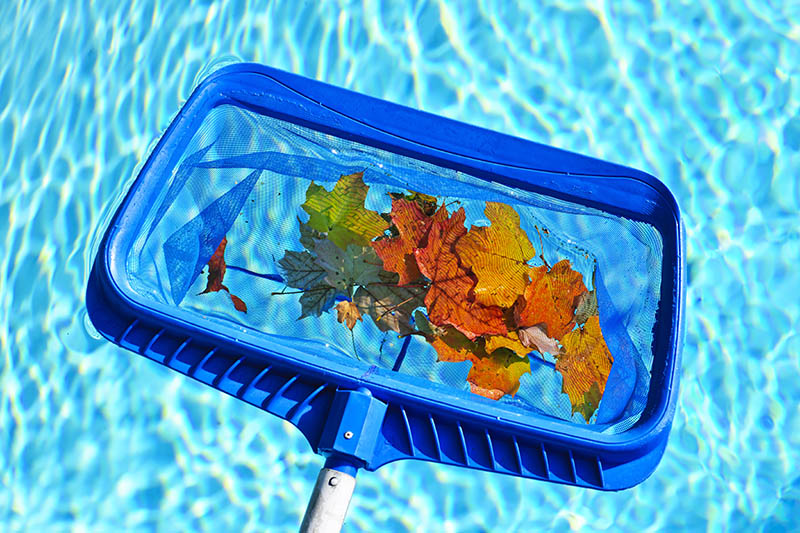The breeze is kicking up, the nights are getting chilly, and leaves are starting to turn. After a glorious summer of long days swimming, you know it’s time to close up your pool. Here are easy steps to make it go as smoothly and as efficiently as possible.

1. Clean Your Pool
You should start preparing the close about a week ahead of time. As soon as your water temperatures are consistently below 65 degrees Fahrenheit (18 degrees Celsius) to prevent algae growth, you’ll want to get started. The first step is to take your brush and vacuum to the pool floor to get rid of all that debris that’s been accumulating over the summer. Then skim it all off the top until your water’s shimmering with clarity.
2. Test and Level Your Pool
In order to stay at op
timum levels during the winter, your pool should be at a Ph level between 7.2 and 7.6. Your total hardness should be 175 to 275 ppm; your total alkalinity should be 80 to 150 ppm. Once chemicals are at the right level, lower your water to just below the tile or the skimmer, whichever you have. If your area never freezes, you can leave the pool full.
3. Shock and Clean Your Pool
First, you should shock your pool to kill any remaining bacteria or algae. You need to do this at least a day before closing the pool as the shock should circulate at least overnight to ensure maximum effect. Once that’s finished, backwash your filter and clean your pump. Add in AlgaeCal and any other chemicals your pool needs to keep it safe from bacteria all winter long.
4. Prepare Your Pool for Freezing
If you live in a climate where it freezes at all over the winter, you’ll want to winterize equipment. Drain your equipment (pump, filter, heater, etc.), bring in and clean the cartridge, sand, and DE filters, and apply antifreeze. If you prefer, you can also blow out your lines, but this step is rather difficult to do. If you want to, you should probably talk to a professional and get expert help.
5. Cover Your Pool
You can use a mesh cover to keep out debris, a leaf net for the milder climates, or a solid safety cover to provide maximum protection from snow or for any animals or children that might accidentally fall in the pool during winter. If your pool is above ground, you’ll also want to purchase an air pillow to keep your pool walls safe from undue air pressure.
There you have it! Five quick steps for preparing your pool for winter. If you’d like help creating and maintaining the pool of your dreams, feel free to contact us today and learn how to make that backyard paradise dream a reality.
